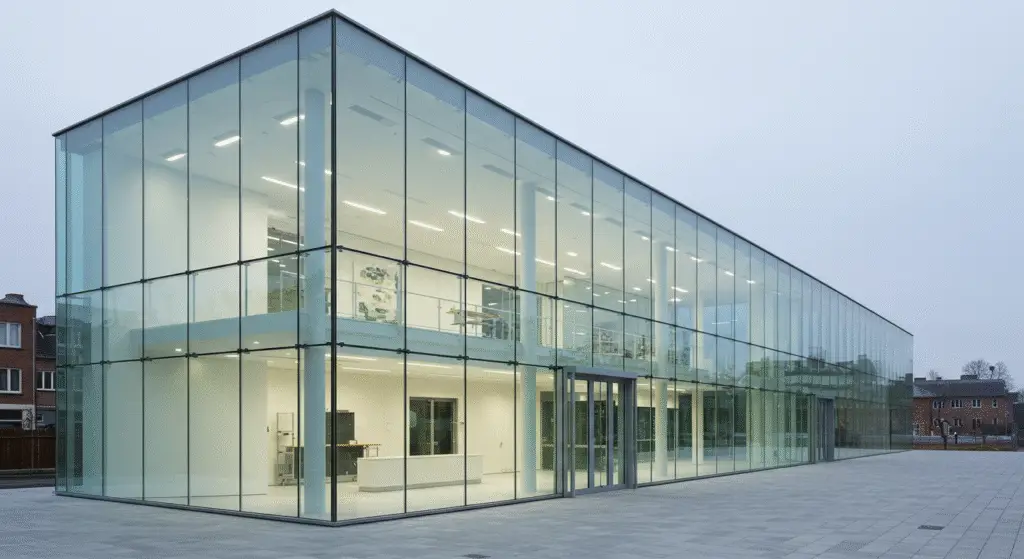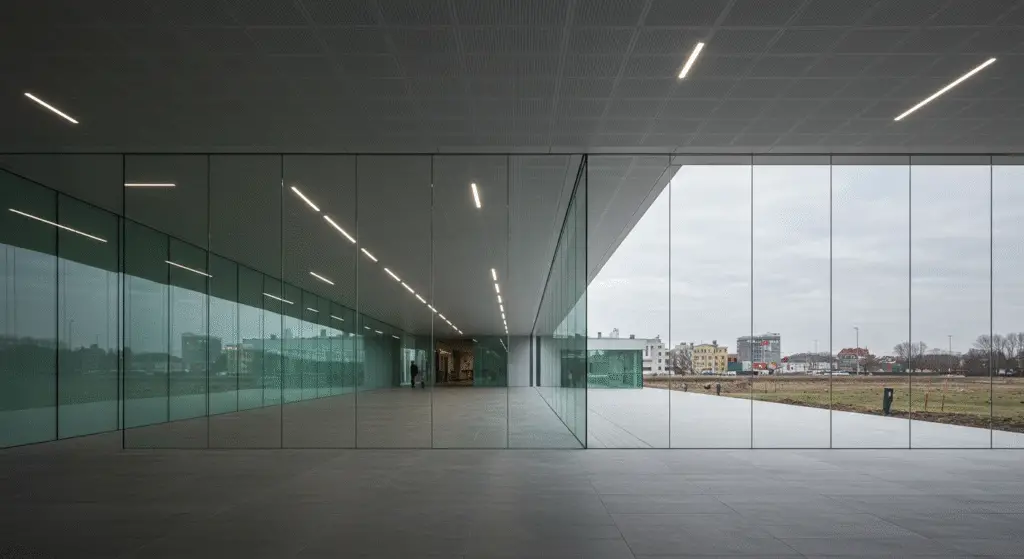Structural Glass: An Exploration of Materials and Applications

Introduction
In the realm of modern architecture, structural glass has emerged as a transformative material, redefining the boundaries of design and construction. Unlike traditional glass, structural glass is not merely a transparent pane but a critical component that bears loads and maintains the integrity of a structure. This article delves into the materials used in structural glass, exploring their properties, applications, and the engineering principles that govern their use.
Understanding Structural Glass

Structural glass refers to glass that is integral to the load-bearing structure of a building. It is designed to withstand various stresses, including wind, seismic activity, and weight, while maintaining transparency and aesthetic appeal. The use of glass in structural applications requires careful consideration of its inherent properties and the incorporation of additional materials to enhance its performance.
Types of Glass Used in Structural Applications
- Annealed Glass
Annealed glass is the most common type of glass and is often used in windows and doors. It is formed by cooling molten glass slowly to prevent stresses. While it is less expensive than other types of glass, it is not ideal for structural applications due to its low strength and susceptibility to breakage.
- Tempered Glass
Tempered glass, also known as toughened glass, is heat-treated to increase its strength and thermal resistance. This process makes it four to five times stronger than annealed glass and causes it to shatter into small, blunt fragments upon impact, reducing the risk of injury. Tempered glass is widely used in structural applications where safety and durability are paramount.
- Laminated Glass
Laminated glass is constructed by sandwiching a layer of polyvinyl butyral (PVB) between two panes of glass. This design provides excellent safety benefits, as the glass remains intact even when broken. Laminated glass is often used in structural applications where security and safety are critical, such as in skylights and overhead glazing.
- Insulated Glass
Insulated glass consists of two or more panes of glass separated by a spacer and sealant. This configuration reduces heat transfer and noise, making it ideal for energy-efficient buildings. Insulated glass is commonly used in structural applications where thermal performance is a key consideration.
- Specialty Glasses
Specialty glasses, such as borosilicate and fused silica, are used in structural applications where high thermal resistance and chemical durability are required. These glasses are often employed in laboratory settings and industrial applications.
Materials Used in Conjunction with Glass

Structural glass often requires additional materials to enhance its structural capabilities. These materials work in tandem with glass to create stable and durable structures.
- Metal Frames
Metal frames, typically made from aluminum or steel, are used to support glass panels in structural applications. These frames provide the necessary rigidity and help distribute loads evenly across the glass.
- Silicone Sealants
Silicone sealants are used to bond glass panels together and to metal frames. They provide a flexible and durable seal, ensuring that the structure remains watertight and airtight.
- Adhesives
Adhesives play a crucial role in structural glass applications, particularly in laminated glass. They hold the layers of glass and interlayers together, ensuring that the structure remains intact under various stresses.
- Reinforcing Materials
Reinforcing materials, such as fiberglass or carbon fiber, can be incorporated into glass structures to enhance their strength and stability. These materials are often used in composite glass products where additional structural integrity is required.

Structural Properties of Glass
The structural properties of glass are fundamental to its use in load-bearing applications. These properties include:
- Strength
Glass is known for its high compressive strength, making it suitable for bearing loads. However, its tensile strength is relatively low, which can lead to failure under tensile stress. Tempering and laminating processes are used to enhance the strength of glass in structural applications.
- Flexibility
Glass exhibits limited flexibility, which can be a disadvantage in structural applications where movement and deformation are expected. However, the use of laminated glass and flexible sealants can mitigate this limitation.
- Thermal Expansion
Glass expands and contracts with temperature changes, which can lead to thermal stress. The coefficient of thermal expansion (CTE) varies among different types of glass, and this must be considered in structural design to prevent cracking and shattering.
- Durability
The durability of glass in structural applications is influenced by its resistance to environmental factors such as weathering, chemical exposure, and impact. Specialized glasses and protective coatings can enhance the durability of glass in harsh conditions.
Engineering and Design Principles
The successful use of glass in structural applications relies on sound engineering and design principles. These include:
- Load Calculations
Engineers must perform detailed load calculations to ensure that the glass structure can withstand various loads, including dead loads, live loads, wind loads, and seismic forces.
- Stress Distribution
Understanding how stress is distributed across the glass structure is crucial for maintaining its integrity. The design must ensure that stress is evenly distributed and that no single point is subjected to excessive force.
- Safety Standards
Adherence to safety standards is paramount in structural glass design. This includes ensuring that the glass can withstand impact and that its failure does not pose a risk to occupants.
- Material Compatibility
The compatibility of materials used in conjunction with glass must be carefully considered to ensure that there is no adverse reaction or degradation over time.
Case Studies: Famous Structural Glass Applications
Examining real-world applications of structural glass provides valuable insights into its practical uses and benefits. Some notable examples include:
- The Crystal Palace, London
The Crystal Palace, built for the Great Exhibition of 1851, was a pioneering structure that showcased the potential of glass in architecture. Its large glass and iron frame demonstrated the feasibility of using glass in grand-scale structures.
- The Guggenheim Museum, Bilbao
The Guggenheim Museum in Bilbao, Spain, features extensive use of structural glass in its atrium and skylights. The flowing curves of the glass design create a sense of fluidity and space, while maintaining structural integrity.
- The Apple Park, Cupertino
Apple Park, the headquarters of Apple Inc., incorporates large glass panels and domes in its design. The use of structural glass allows for an open and airy interior, while the glass’s strength and durability ensure the structure’s stability.
Challenges and Limitations of Glass
While structural glass offers numerous advantages, there are also challenges and limitations to its use:
- Brittleness
Glass is inherently brittle, meaning it lacks the ability to deform plastically under stress. This brittleness can lead to sudden and catastrophic failure if the glass is subjected to excessive force.
- Thermal Stress
The expansion and contraction of glass with temperature changes can lead to thermal stress, which may cause cracking or shattering. This is particularly problematic in large or complex glass structures.
- Cost
The production and installation of structural glass can be costly, especially for specialized or high-performance glasses. This may limit its use in certain projects where budget constraints are a concern.
- Maintenance
Structural glass requires regular maintenance to ensure its longevity. This includes cleaning, inspecting for damage, and addressing any issues promptly to prevent further deterioration.
Future Trends and Innovations
The future of structural glass is promising, with ongoing research and development focused on improving its properties and expanding its applications. Some potential trends and innovations include:
- Advanced Glass Materials
The development of new glass materials with enhanced strength, flexibility, and thermal resistance could revolutionize structural glass applications. These materials may include nanomaterials, smart glasses, and advanced composites.
- Energy-Efficient Glass
There is a growing emphasis on energy efficiency in building design. The development of energy-efficient glass, such as low-e glass and electrochromic glass, could play a significant role in reducing energy consumption and enhancing building performance.
- 3D Printing and Digital Fabrication
Advancements in 3D printing and digital fabrication techniques could enable the creation of complex glass structures with unprecedented precision and efficiency. This could lead to innovative and cost-effective solutions for structural glass applications.
- Integration with Smart Technologies
The integration of smart technologies into structural glass could offer new functionalities, such as self-cleaning surfaces, adaptive shading, and real-time monitoring of structural health. These technologies could enhance the performance and sustainability of glass structures.
Conclusion
Structural glass is a testament to human ingenuity and the relentless pursuit of innovation in architecture and engineering. By understanding the materials used in structural glass and their properties, we can unlock new possibilities for building design and construction. As research continues to advance, structural glass will remain at the forefront of architectural innovation, offering solutions that are both aesthetically pleasing and functionally superior.
The journey of structural glass from its early applications to its current state is a story of continuous improvement and adaptation. As we look to the future, the potential for further innovation is vast, promising even more exciting developments in the world of structural glass. Whether it’s through the creation of new materials, the refinement of existing technologies, or the integration of smart systems, structural glass will undoubtedly continue to shape the built environment in ways we have yet to imagine.

What are the materials used in structural glass?
Structural glass has emerged as a transformative material, redefining the boundaries of design and construction
Pingback: The Different Types of Structural Glazing: A Comprehensive Guide – worldcivilsociety.com
Pingback: Structural Glass Design: A Comprehensive Guide – worldcivilsociety.com